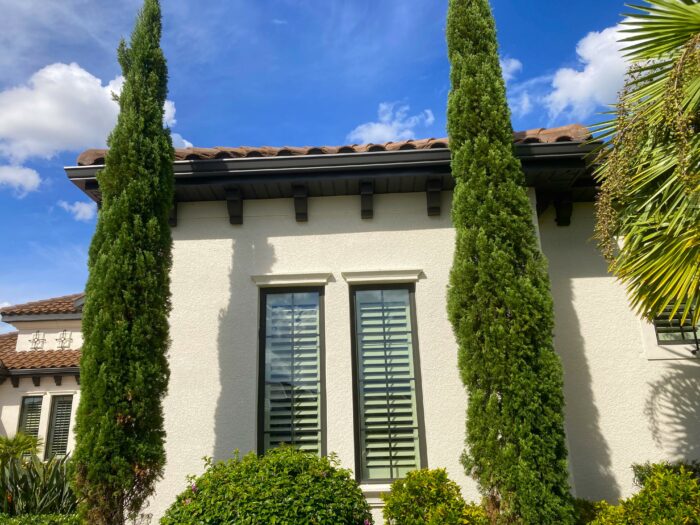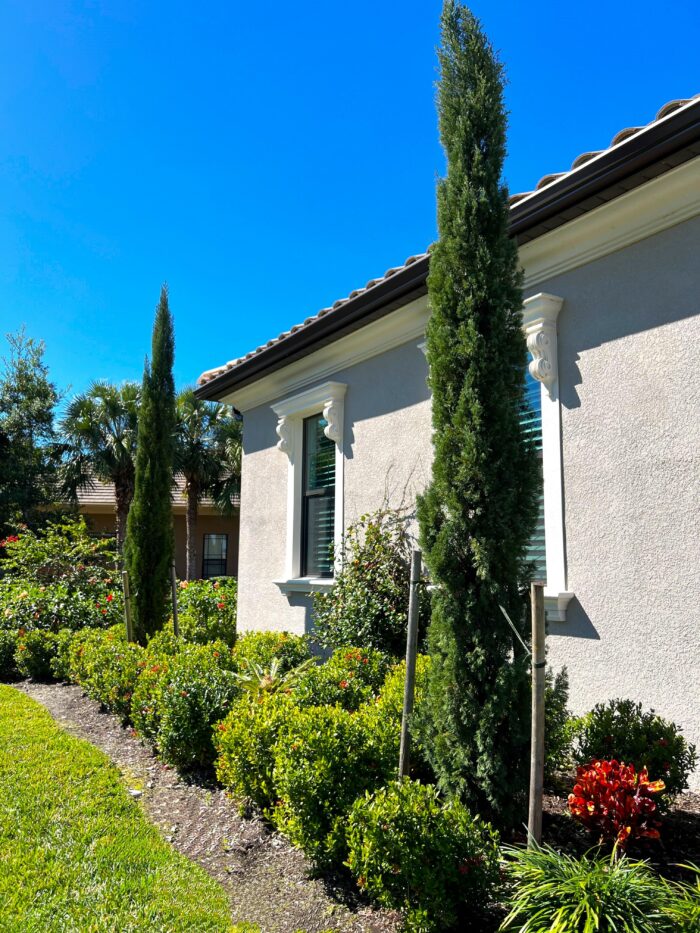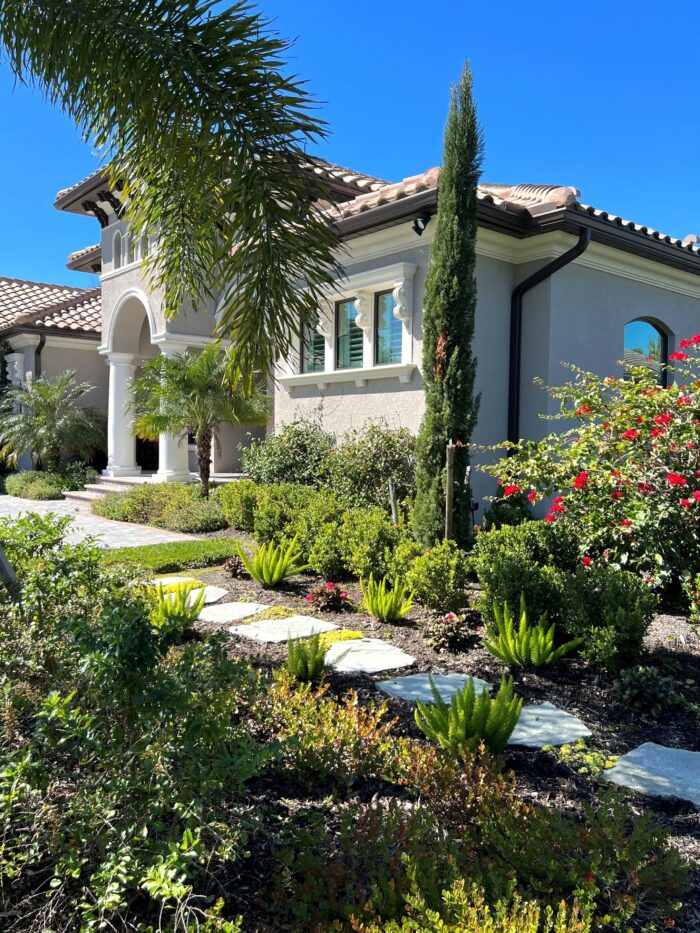Italian cypress trees: Get the skinny from ArtisTree experts.
Italian cypress trees impress with their tall, statuesque presence and ultra-thin shape. But behind their stately appearance are maintenance concerns and questionable ability to withstand high winds (like any other tall tree in Florida, right?). Still, there’s much to be said for these slim evergreens and their Mediterranean vibe. Get the skinny from ArtisTree’s Plantopinions experts.
Joe Mantkowski, VP Landscape Design, thumbs up:
The Italian cypress is a great accent tree that adds an instant stately feel to almost any landscape. I’ve used it as a free-standing piece but more often select it to frame a home’s architecture. It does a very nice job of accentuating a home’s entryway or other areas where you want a more formal feel. Don’t be afraid to trim/top it and be sure to plant in a well-drained area with plenty of sun. Spider mites are the only downside, so you’ll need to spray occasionally.
Clinton Lak, Landscape Designer, thumbs up:
I like Italian cypress for Mediterranean-themed projects. That said, they’re particular and susceptible to spider mites. They need to be in an environment that has well-drained soil, full sun exposure and good air circulation. Even when conditions are ideal, our wet humid summers are tough on them. They’re great for framing entries and providing a structural component to the landscape. They do get tall, so it’s important to consider their mature height. They work well for a two-story or tall one-story; however, place them in front of a one-story ranch with 8-foot ceilings and they’ll ultimately dwarf the house. Both the Spartan juniper and Japanese blueberry are hardier, although they get significantly wider (plus deer like to graze on Japanese blueberries).
Chris Culp, Landscape Designer, thumbs up:
I use Italian cypress trees depending on the style of the residence and the homeowner’s preference for a more formal feel. It’s ideal for narrow areas that need some height. You can plant them as close to three feet to your house but make sure there’s good circulation. One word of advice: This tree is susceptible to spider mites and branches will turn brown if infected. But you can use a spray treatment. Eugenia topiary is another option to consider pending your taste.
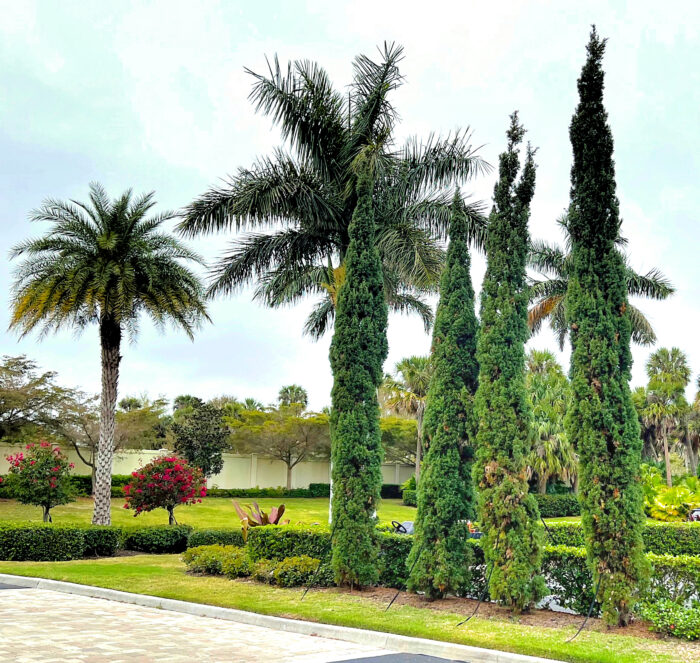
Brian Clouser, Landscape Designer, thumbs down:
I never use Italian cypress trees. Too many issues, mostly from moisture/humidity leading to pests and disease. Not necessarily the best plant for Florida. Seldom seen as individual specimen plants, and when planted in a row or group, there will eventually be an oddball that either shocks, gets pests/disease or dies. High maintenance requirement for a plant that isn’t all that showy. It’s a very cool plant for those who appreciate the care involved to make it look good. But usually, it’s a tall plant that costs a lot in maintenance to look “just OK” at best. They also grow too tall for the average homeowner to maintain and can get multiple leader trunks growing out of the top. I recommend other options, including podocarpus, buttonwood, pitch apple and mast trees. Full-to-ground Eagleston hollies and Japanese blueberries — even certain bamboos (Graceful Weaver, Sea Breeze, Emerald, Timor Black) — are also hardy options. You might also consider tall palms if needed to clear roof heights; the “living column” of a palm trunk is all that’s needed to break up a wall or facade. I recommend Medjool or Sylvester dates, Mule, Royal, Montgomery or Alexander.
Elisabeth Owen, Landscape Designer, thumbs down:
Italian cypress trees are a no for me. I’ve re-staked many that have been taken down by tropical storms or hurricanes. But if a homeowner really wants them, I make sure they’re aware of their specifications and needs. These evergreens grow at a moderate pace to about 30 – 40 feet tall and rarely get more than three to four feet wide. They’re cold hardy, growing anywhere in South Florida as long as they get full to part sun and are planted in well-drained soil. It’s critical they receive no overhead irrigation or else fungus can occur. They can also can suffer from spider mites which are difficult to control. Italian cypress is a good fit for stately, formal homes or those with Mediterranean/Tuscan architecture. But homeowners may get overwhelmed by this tree as it gets too tall for many landscapes.
Conan Michel, Landscape Operations Manager, thumbs up:
I like Italian cypress because it adds a vertical evergreen dimension to any landscape. They’re great for framing windows and doors, lining a driveway, or framing an entrance to a home or development. In my experience they’re most often selected for the way they can give a landscape an instant Mediterranean vibe. Problems can be too wet conditions or insect damage from bagworms or mites that lead to browning if left untreated.

ArtisTree “Plantopinions” is a roundtable debate between multiple ArtisTree experts on the virtues of various plant specimens. Sometimes there’s consensus and sometimes not. In the end, you are the judge!
Contact ArtisTree Landscape 941.488.8897
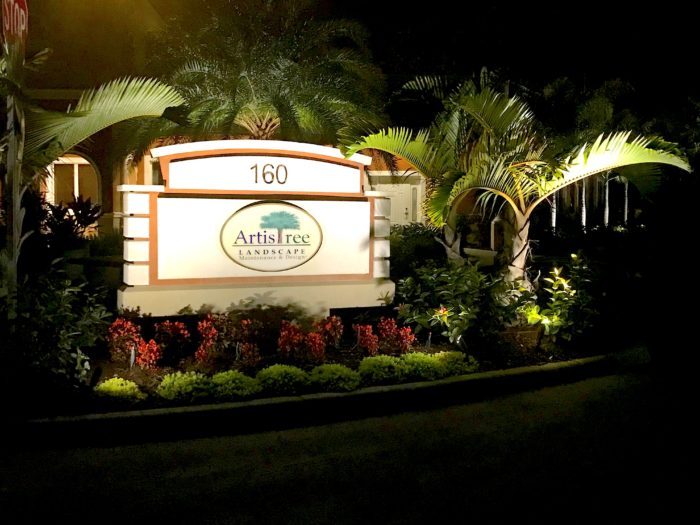
To get your landscape renovation started now, browse ArtisTree’s portfolio and then call Jenni Lassen at 941.488.8897 to meet with one of our award-winning designers. We proudly serve Sarasota, Manatee and Charlotte counties.
ArtisTree also provides complete landscape maintenance services for HOA communities throughout Southwest Florida. Contact Michael Casper at 941.488.8897 for your custom proposal.
Tagged with: ArtisTree Landscape, Sarasota HOAs, Italian cypress trees



